 View and Print as PDF.
View and Print as PDF.

As a child I grew up a few miles from the ocean and was fortunate that my father occasionally took me “deep-sea” fishing. Little did I know at the time that, developmentally speaking, the two cardinal rules for formation of an environmental ethic also were being fulfilled. I was just a kid who loved the adventure of a summer day’s pounding and rolling upon the mighty Atlantic! Neither did I know that a career in science was being nurtured through the boyhood sights, smells, and tastes of ocean waters and the creatures inhabiting them. In adulthood, realization of a Creator’s hand at work in the world has illuminated and energized the awe and amazement that the sea holds for me.
This article explores three interconnected aspects of the seas: the mystery and wonder found there; the profound disruption done even to its most remote spaces by humanity; and some glimpses of optimism and encouragement concerning their restoration and survival. Hopefully these pages will evoke in the reader a freshened curiosity, a renewed concern, and a more active caring for an enormous component of Earth’s natural systems and a part of God’s creation, to which every one of us is connected: the Ocean.

Deep Wonder: The Seas Bring Forth, and Scientists Proclaim!
And there was evening and there was morning, a fourth day.
And God said, “Let the waters bring forth
swarms of living creatures.”
(Genesis 1:19-20a)
The oceans provide an ideal outlet for the yearnings for adventure, mystery, and discovery—and spirituality—that seem to be part of humanity’s genetic code. Courageous voyagers, centuries before the days of Columbus and Magellan, dared to risk falling off what some perceived as the edge of the earth. As a formal science, though, oceanography is just 150 years old. And it was not long ago that explorers in space gave us a whole new and compelling view of Earth as a blue, watery planet. The view of a connected global ocean should and does have profound meaning to scientists and theologians alike (Figure 1).
While 40 percent of the world’s human population lives within 60 miles of a seacoast (1), very few ever travel on its surface beyond the sight of land. Even fewer of us ever venture into the depths. Thus, for many the ocean is seen only as a watery surface. But what is underneath this “skin” that covers over 70 percent of Earth’s surface? Would today’s citizens be more concerned for the ancient call to “tilling and keeping” of the garden—in this case the oceans—if they really knew what the seas contained and how they worked?
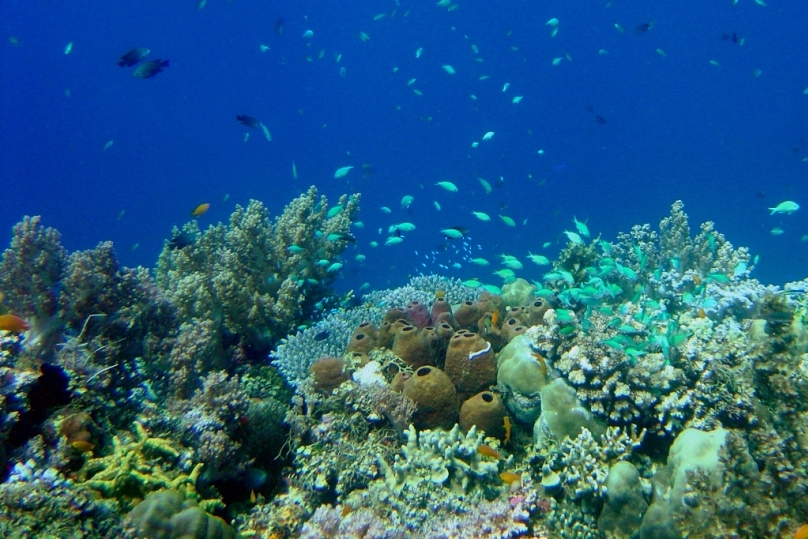
The world’s ocean is a collection of ecosystems, including: coral reefs (Figure 2) and vast seagrass meadows in shallow waters; estuaries including wetlands, sounds and bays ringing the coast; and more recently discovered and publicized deep-sea thermal vent communities. They increasingly are recognized as virtually priceless to the well being of humankind. An estimated 2.2 million species of organisms inhabit the world’s seas. Over 90 percent are yet to be formally described (2). This amazing “swarm of living creatures” introduced in the first chapter of the book of Genesis includes more recognizable groups such as fishes (over 20,000 species), as well as rarely seen shrimp that “glow in the dark” (Figure 3).
Remarkably, the first coordinated survey of all life forms in all corners of the ocean was organized only in 2000. In a decade, a global network of 2,700 scientistsengaged in the Marine Life Census (3)
discovered areas in the ocean where animals congregate, from white shark cafés… to a shoal of fish the size of Manhattan off the coast of New Jersey, USA…[and] found species believed to reside at both poles… Along with secrets came surprises. The existence of giant mats of microbes, ranked among Earth’s largest masses of life, a shrimp thought to have been extinct 50 million years ago, and multi-cellular animals thriving without oxygen at sea bottom, where only microbes were thought to survive… Along with surprises came extremes… the world’s largest biotic ecosystem created by a single type of organism, and a sooty shearwater [that] chased endless summer on its 40,000-mile pole-to-pole journey. Scientists also reported… 38,000 different kinds of bacteria in a liter of seawater.
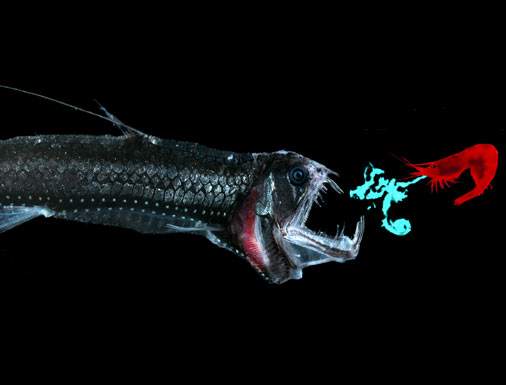
Truly, the ocean is a creation of mystery, beauty, and diversity.
Practically speaking, the connectedness within and between ocean ecosystems is of vital importance to their long-term ecological structure and function, and thus to humanity’s understanding and dependence upon them. For instance, in the 1980s, oceanographers conceived of a global undersea river system of enormous magnitude (Figure 4). According to the U.S. National Aeronautics and Space Administration, “The ocean circulation conveyor belt helps balance climate… Warm water from the tropical Atlantic moves poleward near the surface where it gives up some of its heat to the atmosphere. This process partially moderates the cold temperatures at higher latitudes. As the warm water gives up its heat it becomes more dense and sinks. This circulation loop is closed as the cooled water makes its way slowly back toward the tropics at lower depths in the ocean” (4). Newer research is improving the mathematical models of the conveyor belt, and in turn asking questions about the accuracy of conclusions about changes in its rates and volumes relative to climate modification services (5,6).
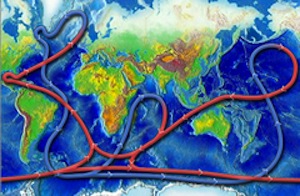
Deep Sorrow: Sins and Severed Connections
“It has been calculated that if no accident prevented the hatching
of the eggs and each egg reached maturity,
it would take only three years to fill the sea so that you could
walk across the Atlantic dryshod on the backs of cod.”
(Alexandre Dumas, 1853)
Until modern times of the past century or so, it would have been easy for almost anyone to survey the treasures of the world’s ocean and wonder how they ever could be exhausted. How could seemingly unlimited schools of codfish off New England and Canada ever collapse? Or how could coral reefs, the so-called rainforests of the sea, be decimated even in the most remote corners of paradise? And how could there ever come to be a class of humanity called “environmental refugees,” whose coastal homelands face flooding from unexpected rises in sea level?
The ecosystems of the planet contribute to human welfare by providing goods and services, such as food, fuel, biochemicals, soil, and regulation of floods, disease, and climate, as well as aesthetic, spiritual, and inspirational factors. Costanza et al. (7) calculated (in 1997) an average figure of U.S. $33 trillion per year as the value of “services of ecological systems and the natural capital stocks that produce them [that] are critical to the functioning of the Earth’s life-support system.” That was twice the total gross domestic product (GDP) of the United States! According to an estimate made in 2012, perhaps two-thirds of this value is derived from the coastal and ocean biomes of the planet (8). That would be over 20 trillion dollars at 1997 levels, and still larger than America’s GDP.
A few organizations have attempted the daunting task of assembling comprehensive descriptions of the state of the planet. The Millennium Ecosystem Assessment engaged literally thousands of scientists and other professionals from academia, business, and government agencies across the world between 2001-2005, with exhaustive, peer-reviewed reports finding: “Over the past 50 years, humans have changed ecosystems more rapidly and extensively than in any comparable period of time in human history, largely to meet rapidly growing demands for food, fresh water, timber, fiber and fuel. This has resulted in a substantial and largely irreversible loss in the diversity of life on Earth” (9).
These reports identified specific causes: “Ecosystem degradation associated with fishing activities is the most widespread and dominant impact, with pollution as an additional factor on coastal shelves, and habitat loss a factor in populated coastal areas” (10). The Census of Marine Life offers a timeline: “In the deep sea, past impacts were mainly from disposal of waste and litter. Today, fisheries, and hydrocarbon and mineral extraction have the greatest impact. In the future, climate change is predicted to have the greatest impact” (11).
A review of the weight of our “Human Footprint” upon the ocean by Doney summarizes major negative trends as“a shift in the acid-base chemistry of seawater, reduced subsurface oxygen both in near-shore coastal water and in the open ocean, rising coastal nitrogen levels, and widespread increase in mercury and persistent organic pollutants. Most… tied either directly or indirectly to human fossil fuel combustion, fertilizer use, and industrial activity, are projected to grow in coming decades” (12).
Some manifestations of impacts on ecosystem services include:
- Fisheries in decline. “Peak Fish” occurred in 1996 (87 million tonnes) (13), and smaller catches—increasingly of smaller size individuals and of less “desirable” varieties—are more typical today. The cause: “Overfishing that has resulted in reductions of target species (i.e., what people like to eat) to as much as 10 percent of historical, pre-industrial, baseline levels of abundance. Associated human costs include disruption of coastal community structure and waste of funds through overcapitalization of fishing fleets [and] habitat destruction from fishing practices and reduction of biodiversity and associated ecosystem services also occur” (14). In one well-known example, the early 1990s collapse of the Newfoundland (Canada) cod fishery due to overfishing resulted in the loss of tens of thousands of jobs and has cost at least $2 billion in income support and retraining (15).
- “Dead zones” are just that: Extensive (over 400 locations) and increasing areas (almost 100,000 square miles) worldwide of nearshore ocean bottoms that are deprived of oxygen (“hypoxia”) by excessive plant growth and decay, so that other organisms basically are asphyxiated (16). One such area is off the mouth of the Mississippi River in the northern Gulf of Mexico, equal in size to the state of New Jersey. The problem stems from long-term, elevated inputs of nutrients—nitrogen and phosphorus, in particular—such as drain from agricultural areas in the American Midwest.
Depletion of biodiversity and a “wave of extinction.” Over the past century, documented extinctions within well-studied groups such as birds and mammals were 1,000 times higher than the average extinction rate of long-term fossil records (17). The high diversity of genes, species, and habitats that undergirds the ecosystems of the ocean faces a similar threat.
- Sea level rise. Over geologic time the seas, and of course of the continental landmasses, have risen and fallen by monumental amounts. Given enormously long geologic time scales, species and ecosystems could adapt. At present, though, it is the high rate of sea level rise over the short term that is causing alarm among biologists, engineers, sociologists, and urban planners, among others. Their fears include flooding of seaside cities and submergence of productive wetlands, with associated high environmental, social, and economic costs of adaptation (18).
- Environmental refugees. The Embassy of the Marshall Islands puts the phenomenon of sea level rise in human terms: “The Marshallese would become among the first of many environmental refugees. This would be a devastating disruption not only for the culture and the people of the island countries, but also for the countries that would need to accommodate the refugees” (19). News accounts already have reported purchase of land in Australia for resettlement by the Maldives Archipelago, population 350,000. The number of “environmental refugees” in the world may now outnumber those who are called political refugees (20).
- Coastal ecosystems are among the most biologically productive yet highly threatened systems in the world. A factor is that nearly half of all cities with populations over 500,000 are coastal (21). Approximately 35% of tropical mangrove forests—trees likely to be unfamiliar to most North American readers but of enormous global importance as shallow wetland “nurseries” for a host of marine animal species—were lost in the mid to late twentieth century (22), with establishment of coastal shrimp farms being one significant factor. Similar destruction has taken place in salt marshes and seagrass meadows.
- Coral reefs, shrinking hotspots of biological productivity, are as “rich” as rainforests and are suffering distress from pollution, ocean warming and acidification, and overfishing. About 850 million people live within 60 miles of a coral reef, with over 275 million directly associated with the services they provide (23). A 2012 report finds that more than 85 percent of reefs in the vast, six-nation Coral Triangle area of the Pacific Ocean, pictured above, are directly threatened by local human activities(24).
- Coral reef bleaching is a worldwide epidemic that warrants special notice, because it serves as an early warning indicator that the ecosystems of the seas are under high stress. “Bleaching” refers to the stress, loss of color, and death of the microscopic plant and animal systems that make up a coral colony, caused by disruptions such as increasing water temperature. In one dramatic example of loss of “ecosystem services,” total damages for the Indian Ocean region over 20 years resulting from the long-term impacts of a massive, worldwide coral bleaching episode were estimated to be, according to a worst case scenario, over U.S. $ 8 billion, due to erosion and lost fisheries and tourism (25).
- Future costs. A unique view of the world’s ocean economy is provided in a 2012 book that estimates the future costs and losses from six critical human impacts (i.e., ocean acidification, ocean warming, hypoxia, sea level rise, pollution, overuse of marine resources) if they continue unabated: “Declines in ocean health and services will cost the global economy $1.979 trillion per year by 2100. Alternatively, steps to reduce these impacts could save more than a trillion dollars per year by 2100” (26).
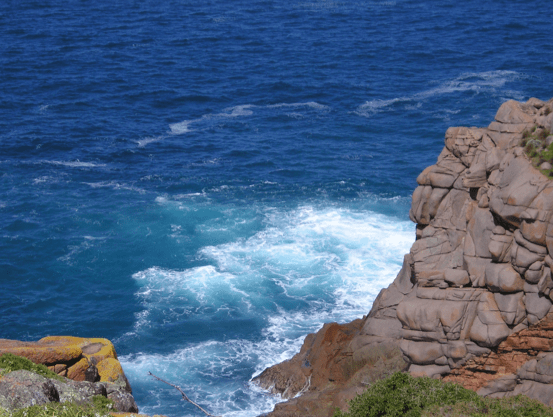
Why would humans spoil the “garden” of the ocean? Some causes discussed by experts include ignorance, lawlessness, and irresponsibility. Pragmatically, a United Nations Environmental Programme report states that “Ocean and coastal ecosystems suffer—perhaps more than any other ecosystem—from both knowledge and governance deficits. Ocean and coastal biomes are especially vulnerable because they cross borders and jurisdictions, or—as is the case for the high seas—lie beyond traditional jurisdictions” (23). A classic paper beautifully entitled “The Tragedy of the Commons” made a compelling argument about the inevitable demise of natural resources when no one owned or had responsibility for them, yet still had free access to pursue personal gain (27).
The word “sin” is used by Ellen Davis of Duke University to characterize causes of environmental disruption concerning the connectedness of the ancient Hebrews to the lands that sustained their agricultural society. In her discussion of the prophets Isaiah and Jeremiah she states that “human sin strikes fundamentally at the integrity of creation” (28). Could not her statement that “Land degradation is a sure sign that humans have turned away from God” apply to ocean degradation as well? (See Figure 5.)
Sin is defined first as “an immoral act considered to be a transgression against divine law” and secondly “an act regarded as a serious or regrettable fault, offense, or omission” (Oxford Dictionary). These definitions cast a wide net, and should cause us to consider: Against whom and how monumental are various transgressions and offenses committed, through either “sinful action” or “sinful failure to perform an action?” Futher, underlying the acts themselves is the actual disposition of our human nature. Here we need to question our attitudes toward exploitation/consumption of natural resources (and disposal of “wastes”) and ultimlately the nature of our relationship (and degree of alienation) with God.

Deep Hope: Education, Inspiration, Participation
“Those who would transform a nation or the world… can’t inspire revolution by telling people what’s wrong, what to do, facts and figures. To create a revolution you have to ‘kindle and fan an extravagant hope’.”
(Eric Hoffer, 1951)
The grave messages concerning human failings, Earth disruption and consequences for the ocean lead us to ask two questions, which amount to, in one form or another, “why care?” and “where is the hope?”
Some say it makes economic sense to care. Some proclaim a moral imperative for so-called “eco-justice.” Among “seven points of religious accord in environmental ethics that Muslims endorse,” physician Shahid Athar states that “Humans are obliged to be aware and responsible for living in harmony with the natural world” (29). Speaking on behalf of eleven faiths, including Islam as well as Buddhism, Christianity, Hinduism, and Judaism, the Alliance of Conservation and Religions (ARC) gives a spiritual reason to care: “Because in all their sacred books, through their traditional practices and running as a thread through the protection of sacred sites runs care and compassion for the natural world.”(30). (Realisitcally, we note that it is the greater secular community at-large that has done much of the “heavy lifting” to spread care and hope for stewardship of the seas of the planet.)
Let us not be deceived. A huge proportion of the scientific community is expressing profound (even prophetic?) concern for what they see as the single most urgent threat to the character of Earth as we have known it: disruption of Earth’s climate (31). We must be clear: the effects of rising greenhouse gas levels in the atmosphere threaten to trump myriad efforts to sustain and restore various components of the environment. Some say that we are past a tipping point for carbon dioxide levels (32), whereby we shall be living on a different planet—hotter here, cooler there, drier/wetter, more extreme weather events, extinction of species, flooded coasts, and so on—even before the end of this century.
But neither let us be discouraged. Well-known environmental writer Bill McKibben reflects a hopeful “sea change” in his foreword to a collection of interfaith essays (33) by noting the significant rise in the number of environment-related theological books and sermons in the past decade. He states, “We’ve passed a tipping point, and faith communities are finally beginning to understand the importance of their actions for the world… [and] for the church, the synagogue, the mosque” (34).
As to “where is the hope?,” answers come from, among other sources, theologians, journalists, scientists and business leaders, the websites of numerous ocean advocacy groups, and from sacred writings. The ARC’s reference to the world’s religions as the “first environmental campaigners” encourages us in finding beacons of care and compassion. Hope may come down to a rational and considered decision, or perhaps an irrational prompting from within by God’s Spirit.
This paper concludes with just a very few examples of hopeful actions, according to three categories, namely Education, Inspiration, and Participation, which loosely reflect the North American Association for Environmental Education (NAAEE) (35), a person’s evolving engagement with environmental subjects.
If we are seeking hope for the oceans, surely there are ways to educate ourselves or others, and thereby cultivate awareness and understanding.. For example: the interested citizen, whether coastal or far inland, might take a first step toward “Ocean Literacy” by consulting the National Marine Educators Association (36), whose principles reflect the NAAEE sequence of learning noted above. The interested consumer, meanwhile, can ask about the source of seafood at a restaurant or fishmonger’s shop. The Seafood Watch Program (37), one of a number of monitors of fishing harvest practices, explains why it makes a difference whether the fish we purchase was harvested sustainably or not. For this reason it includes popular varieties such as orange roughy, monkfish, and most Chilean sea bass on its “Avoid” shopping list. Or, the persons whose concern for the oceans is rising might just think about their own connections to the sea, in terms of greenhouse gas emissions to atmosphere or what drains out of their home and yard into waters that ultimately wind up in the ocean, and consider new ways of lifestyle. In short, we need to learn how big our “Growing Human Footprint” (12) upon the ocean really is.
Surely there are voices and pathways to inspire us in serious reflection and critical thinking toward the oceans! Each of us feeling sorrow about the plight of oceans might, at some level, prayerfully confess to being part of humanity’s sin against the oceans. The Book of Psalms offers guidance in this area: “For I confess my iniquity, I am sorry for my sin” (Psalm 38, verse 18); and offers words to pray in seeking promises of comfort, “Relieve the troubles of my heart, and bring me out of my distresses” (Psalm 25:17). Persons of faith in Australia call us to “Celebrate Earth as a sacred planet filled with God’s vibrant presence,” as part of an ecumenical network called Season of Creation, which aims“To return to our biblical roots to rediscover our intimate connections with creation” (38). This one example of corporate worship should encourage us to uplift and support our faith traditions as they move beyond the hopeful tipping point of Bill McKibben, noted above.
And, if we are seeking hope for the oceans through participation, surely there are tangible “on-the-water” footsteps for us to follow in putting thoughts, words, and faith into action. I.e., take responsibility! The state’s governmental website declares that “The Chesapeake Bay is Maryland’s greatest economic and environmental treasure.” Human-induced decline in water quality due to over enrichment of unwanted nutrients deposited via wastewater effluent, urban and agricultural runoff, and air deposition has severely impaired the ecosystem services of the nation’s largest estuary (39). Restoration is an enormous undertaking. While massive governmental efforts are underway, here we note that volunteers are an essential part of the process that plants oysters and seagrass, cleans shorelines, and advocates for public policy. One organization logs over 10,000 volunteer hours annually (Chesapeake Bay Environmental Center [40]), and another enlists 7,000 volunteers in Virginia alone for an annual “Clean the Bay Day” (Chesapeake Bay Foundation [41]).
In closing, we come full circle to consider education, inspiration, and participation in the lives of children who grow up near the ocean. Under different circumstances than noted in our introduction, hundreds of middle school children in Providence, Rhode Island, who are at-risk academically and in other ways also “go to sea.” They attend Summer Scholar classes held partly aboard coastal research vessels working on Narragansett Bay. They get to practice environmental science, taught by local teachers, along with staff and volunteers from the Save the Bay organization (42). Even as they are having fun and catching up with classroom skills, these children are receiving the added benefit of nurture in forming an environmental ethic, first by spending time in the outdoors, and secondly having an adult mentor’s influence to share a love of the ocean environment. As reflected in Figure 6, these are the faces of hope.
“We may feel daunted as we face the seemingly impossible challenge
posed by care for the environment and the need for sustainability.
But an essential Christian message is that we do not have to carry the responsibility alone.
Our partner is none other than God Himself.”
(Sir John Houghton, 2007 [43])
_________________
AUTHOR BIO: William Seaman is a scientist, educator and author. He and his wife reside in the mountains of western North Carolina. His Earth stewardship portfolio includes long-term research, outreach and grantsmaking in ocean and coastal ecosystem conservation, and recent effort toward building scientific and Biblical literacy for sustainable care of Creation among faith-based and other audiences. He is Professor Emeritus, University of Florida. As a member of Montreat Presbyterian Church (U.S.A.) he participated in its achievement of Earth Care Congregation status in the national denomination, and leads its Earth Ministry Team.
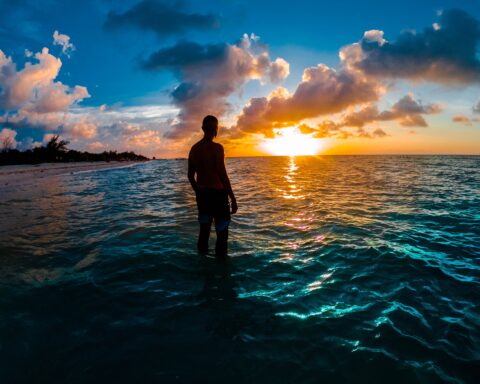

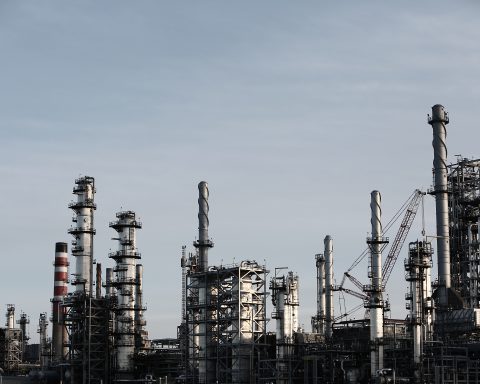

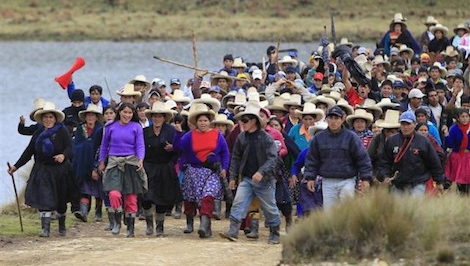
Unbound Social